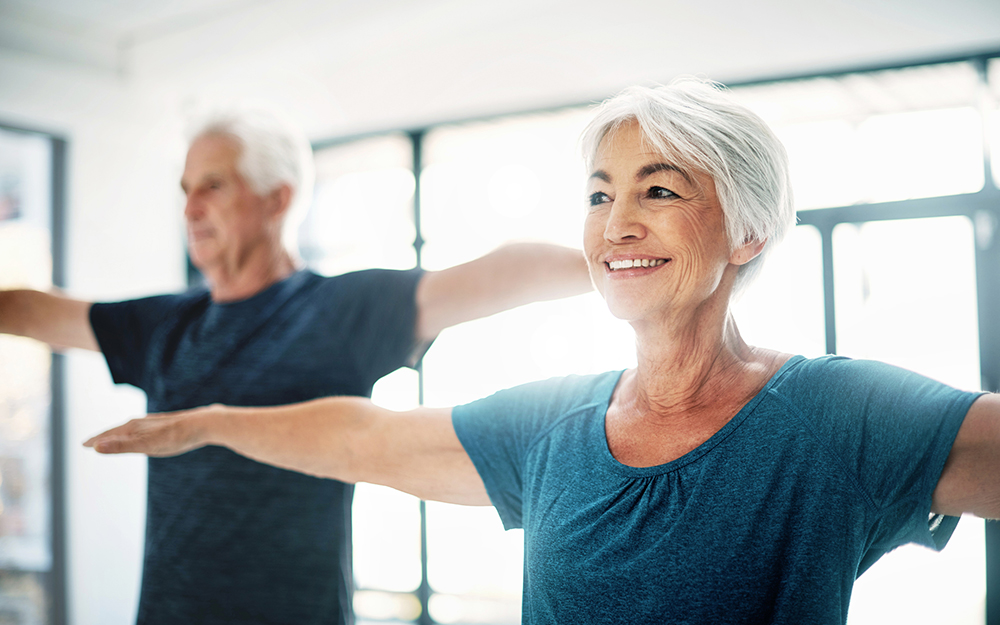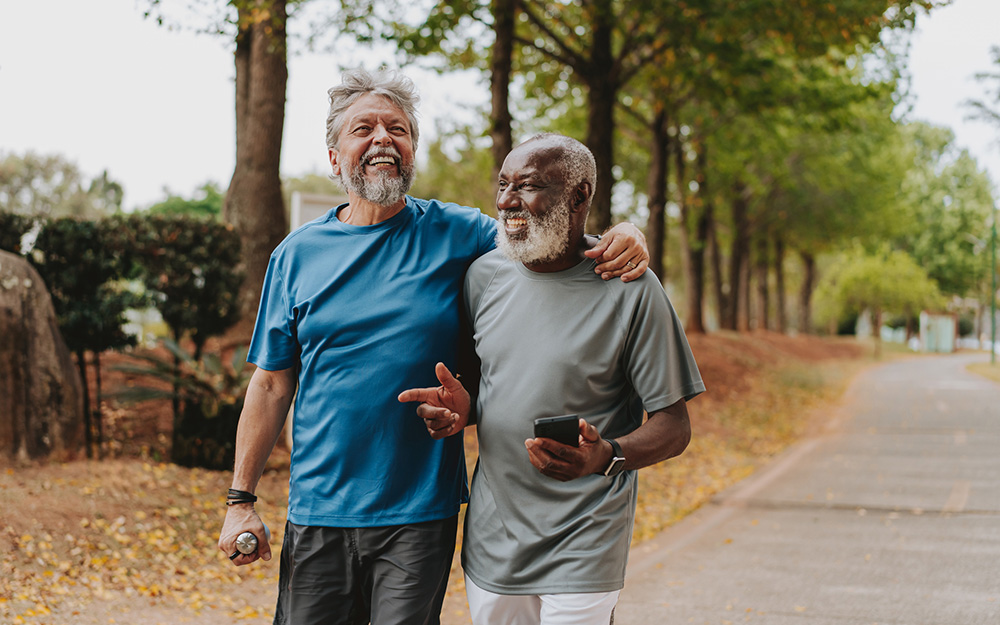A Daily Dose of Exercise as You Age
Date
October 30, 2023

Date
October 30, 2023
Credits
Medical providers featured in this article
In Brief
{{cta-block}}
Everyone gets tired more easily as they get older. Eventually, time spent sitting or lying down can creep into hours and days.
While you need rest, it is also vital that you move your body throughout your life. Exercise safeguards against osteoporosis and dangerous falls, as well as dementia and heart disease—all of which are more common in sedentary older adults. Even if you already have cognitive decline, a consistent exercise regimen can keep you thinking sharper for longer.
Movement also helps you avoid or survive stroke and at least eight cancers, including bladder, colon, endometrial and stomach cancer, according to the Centers for Disease Control and Prevention.
The mental health benefits of exercise are equally powerful. You might even feel younger or experience a surge of energy.
“Every little bit of physical activity counts,” said Mary Norman, MD, a Cedars-Sinai geriatrician and Senior Advantage Primary Care physician.
Older adults just need to adapt their workouts to their changing bodies and lives—and partner with their doctor to find the right plan for them.
Exercise Guidelines for Older Adults
Adults 65 and older should aim for between 2.5 to 5 hours of moderate exercise each week, according to recommendations from the Department of Health and Human Services. Or, they can engage in between 1.25 to 2.5 hours of intense aerobic exercise each week, including rhythmic, heart-pumping workouts such as cycling or dancing.
Every exercise plan should include this endurance training alongside stretching, weight training and balance skills, Norman added.
“You can get away with not doing balance exercises for a good part of your life, but as you age, better balance means the difference between catching yourself or falling and potentially breaking a bone,” she said.
Practice steadiness with relaxing tai chi and yoga or simple at-home routines, such as standing on one foot or walking backward.
To support muscle and brain function, incorporate at least two strengthening workouts each week, officials suggest. In addition to weightlifting, you could build strength with resistance bands or sets of pushups or planks. Even just picking up groceries counts.
Bone and muscle density shrink over time, but consistent training can slow declines, cutting your risk of falls by up to 39% and helping prevent fractures and disability.
“The wisest seniors I care for look at exercise the same way they would eating a meal, taking a bath or brushing their teeth,” Norman said. “It’s an essential daily activity.”
Getting Your Rx
Consult your doctor before you begin exercise if you haven’t been active in a long time or have any physical limitations.
Your annual wellness visit is an ideal time to figure out the best workout regimen for you, according to Norman.
Your primary care doctor or geriatrician’s “Timed Up and Go” test will examine balance and strength as you walk across the room. They should spot which areas, such as core or upper leg muscles, might need work.
The medical evaluation can further identify problem areas—such as heart health, a sore foot or hip arthritis—that make exercise harder. You might need specialty care or physical therapy to optimize your health so you can exercise safely for the long term, Norman added.
"The wisest seniors I care for look at exercise the same way they would eating a meal, taking a bath or brushing their teeth. It’s an essential daily activity."
—Mary Norman, MD
Share your interests with your doctor so they can tailor a unique exercise program for you, updating it each year as you age.
Your regimen should adjust for any health conditions. A daily walk can counteract bone loss in older adults with osteopenia, for example, but it’s likely not safe or practical for an arthritis patient with weak knees to walk for 30 minutes.
“Seniors can’t always meet adult exercise recommendations,” Norman explained. “For some, 10 minutes might be far better than 30 minutes.”
One day, you might be able to get an even more personalized prescription, down to your genes and molecules, with emerging physiology research from Nicolas Musi, MD, director of the Division of Endocrinology, Diabetes and Metabolism at Cedars-Sinai.
Find the Fun in Moving
Swimming, especially, can keep you afloat in older age, Norman said.
Water activities work out the whole body, boosting balance and endurance. Whether you’re doing a calm morning breaststroke or aerobic jumping jacks in the pool, pool workouts are lighter on your joints and relieve pain. Some swimmers can even continue the sport beyond their 100th birthday.
“The trick is to find an activity you love that makes you want to keep going,” Norman said.
That could be walking your dog, hiking in nature, golfing with friends, riding a bike or even gardening. Dancing or Zumba might be the right fit for those who enjoy music.
It’s never too late to try something new, Norman said. To get the most out of your exercise, she suggested working out with a buddy.
Geriatric studies such as Cedars-Sinai’s ongoing Leveraging Exercise to Age in Place (LEAP) Program have found group exercise fights loneliness and social isolation—a major health problem for older adults—along with depression and anxiety.





